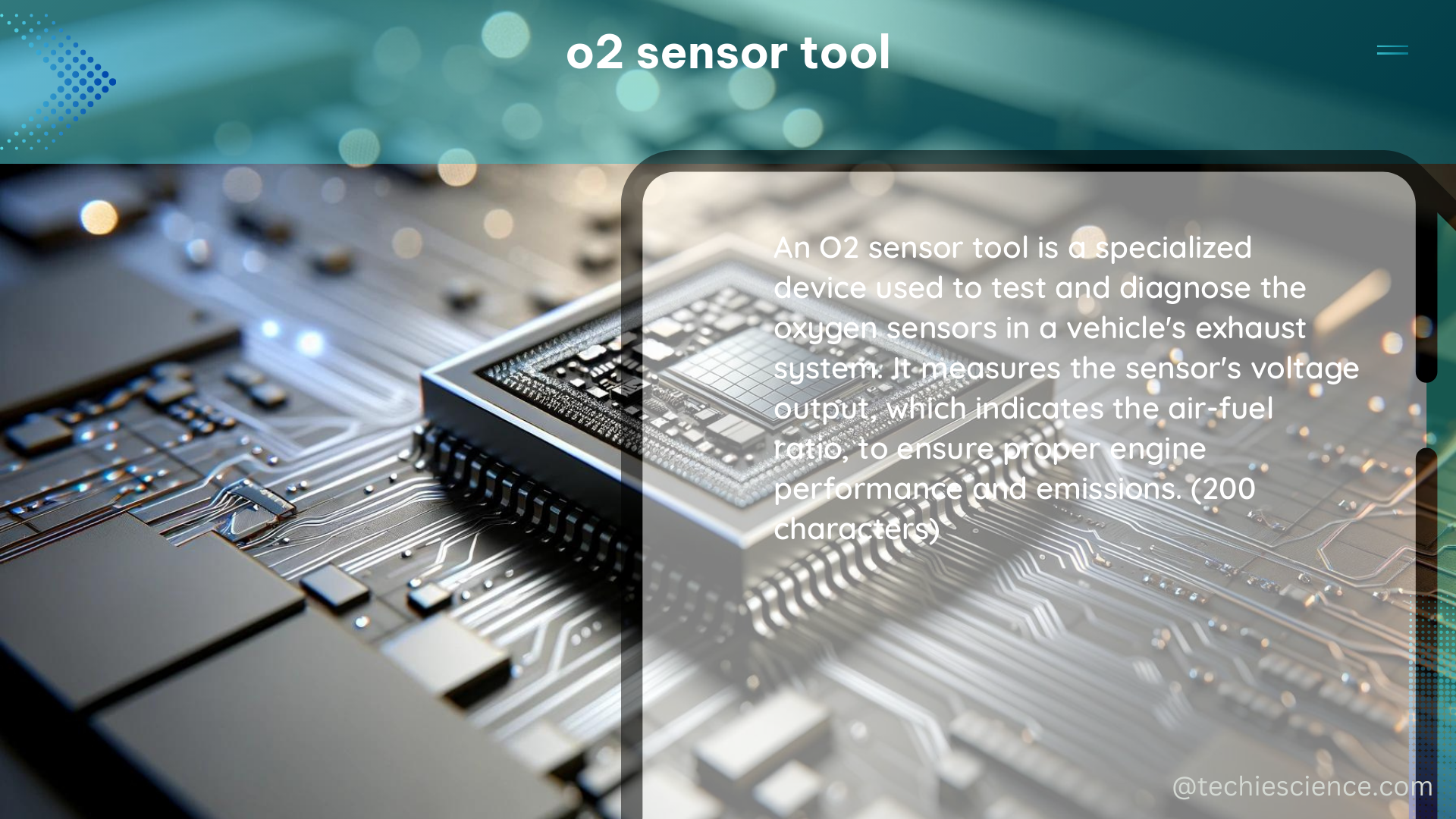The O2 sensor, also known as the oxygen sensor or lambda sensor, is a crucial component in modern automotive engines that measures the amount of oxygen in the exhaust gas. It plays a vital role in maintaining the optimal air-fuel ratio, which is essential for efficient combustion, reducing emissions, and ensuring the engine runs smoothly. In this comprehensive guide, we will delve into the technical specifications, usage details, and DIY aspects of O2 sensor tools, providing you with a detailed manual to master the art of exhaust gas monitoring.
Technical Specifications of O2 Sensor Tools
O2 sensor tools, often integrated into OBD2 scanners or specialized O2 sensor testing devices, provide real-time data on the oxygen content in the exhaust gas. These tools typically offer the following features and specifications:
Data Display
O2 sensor tools display the oxygen content in millivolts (mV) or as a voltage ratio, often ranging from 0.1 to 0.9 volts. The voltage output of a properly functioning O2 sensor should fluctuate rapidly between 0.1 and 0.9 volts, indicating the engine’s air-fuel ratio is being closely monitored and adjusted.
Sampling Rate
These tools can sample data at various intervals, from several times per second to once per minute, depending on the device’s capabilities and the user’s needs. A higher sampling rate, such as 10 samples per second, can provide more detailed and accurate data for troubleshooting and analysis.
Data Logging
Many O2 sensor tools allow data logging, enabling users to store and analyze the collected data over time. This feature is particularly useful for identifying intermittent issues or monitoring the long-term performance of the O2 sensor.
Connectivity
O2 sensor tools can connect to the vehicle’s OBD2 port, usually located under the dashboard, and may offer wireless connectivity options, such as Bluetooth or Wi-Fi, for easy data access and analysis. This allows users to monitor the O2 sensor readings remotely or integrate the data with other diagnostic tools.
Compatibility
O2 sensor tools should be compatible with the vehicle’s make, model, and year, as well as the specific O2 sensor type installed in the engine. It’s essential to ensure the tool is designed to work with the vehicle’s system to obtain accurate and reliable readings.
Usage Details and DIY Aspects of O2 Sensor Tools

Using an O2 sensor tool involves connecting it to the vehicle’s OBD2 port and interpreting the displayed data. Here are some steps and tips for using these tools:
Connection
- Locate the OBD2 port, typically found under the dashboard, and connect the O2 sensor tool following the manufacturer’s instructions.
- Ensure the connection is secure and the tool is receiving power from the vehicle’s electrical system.
- Some tools may require additional setup, such as selecting the appropriate vehicle profile or configuring the data display settings.
Data Interpretation
- Understand the displayed data, which usually represents the oxygen content in millivolts or as a voltage ratio.
- A properly functioning O2 sensor should display a rapidly changing voltage, switching between lean (0.1-0.4 volts) and rich (0.6-0.9 volts) conditions multiple times per second.
- The voltage should fluctuate within this range, indicating the engine’s computer is actively adjusting the air-fuel ratio to maintain optimal combustion.
Troubleshooting
- If the O2 sensor readings are outside the normal range or do not change rapidly, it may indicate a faulty O2 sensor or other engine issues.
- Refer to the vehicle’s service manual or consult a professional mechanic for further diagnosis and repair.
- Common O2 sensor issues include slow response time, stuck in a lean or rich condition, or complete sensor failure.
DIY Maintenance
- Regularly monitoring the O2 sensor readings can help identify potential issues early, allowing for proactive maintenance and repairs.
- This can save time and money by preventing more severe engine problems, such as catalytic converter damage or increased fuel consumption.
- By understanding the O2 sensor’s behavior and interpreting the data, DIY enthusiasts can perform basic troubleshooting and maintenance tasks, reducing the need for costly professional services.
Conclusion
O2 sensor tools are essential for maintaining optimal engine performance, reducing emissions, and ensuring compliance with emissions regulations. By understanding the technical specifications, usage details, and DIY aspects of these tools, vehicle owners and mechanics can effectively monitor and maintain their engines’ O2 sensors, ensuring their vehicles run at peak efficiency and reducing the environmental impact of their driving.
References
- Need help reading live data O2 sensor
- How to Use an O2 Sensor Tester
- Oxygen Sensor Voltage Range Specifications
- Understanding Oxygen Sensors: How They Work and How to Test Them
- Diagnosing and Replacing Oxygen Sensors

The lambdageeks.com Core SME Team is a group of experienced subject matter experts from diverse scientific and technical fields including Physics, Chemistry, Technology,Electronics & Electrical Engineering, Automotive, Mechanical Engineering. Our team collaborates to create high-quality, well-researched articles on a wide range of science and technology topics for the lambdageeks.com website.
All Our Senior SME are having more than 7 Years of experience in the respective fields . They are either Working Industry Professionals or assocaited With different Universities. Refer Our Authors Page to get to know About our Core SMEs.